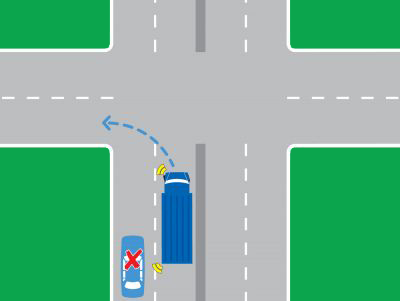Indicating and turning left or right
Know how to use your indicator, and turn left or right safely on NSW roads.
Indicating and hand signals
Indicating (also called signalling) is when you use your indicator to warn other drivers that you intend to move left or right. For example, when you turn, overtake or change lanes.
Plan your turns, lane changes and moves early, so you’re in the correct lane and have enough time to indicate. Always check for other vehicles by looking in your mirrors and checking your blind spots.
You must indicate before you:
- turn right or left
- move to the right or left
- make a U-turn or three-point turn
- change lanes, including when overtaking
- merge with another lane
- pull over to stop or park
- pull out from the side of the road
- turn right or left at a roundabout
- go straight ahead at a T-intersection where the continuing road curves to the right or left
- leave a roundabout, if practical.
Make sure your indicator is turned off after each turn or lane change.
Before pulling out from the side of the road or a parking area, you must indicate for at least 5 seconds.
If your vehicle is fitted with indicators, they must be working and clearly visible. If they’re not working, you can get a Defect Notice.
Hand signals
If your indicators are not working or not clearly visible or your vehicle is not fitted with them, you must give a hand signal when turning right or stopping.
Bicycle riders must give a hand signal when turning right.


Turning left
When making a left turn, you must:
- indicate left
- move close to the left side of the road
- keep to the left side of the road you’re turning into
- use a slip lane where there’s one.
When driving on a multi-lane road, you must turn left from the left lane, or from a lane with an arrow pointing left.
'Left' and 'No left' turn signs

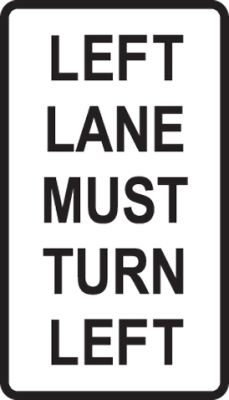
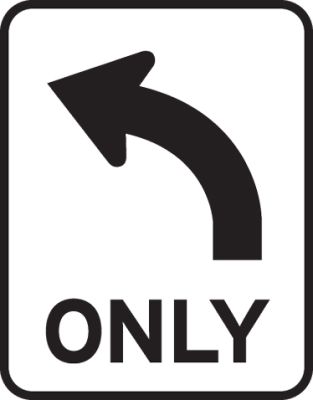
Turning right
When making a right turn, you must:
- indicate right
- follow any road markings for turning, such as lane lines and painted arrows
- move as close as possible to the dividing line on the road you’re turning from
- stay in the same lane as you turn from one road to another.
When driving on a multi-lane road, you must turn right from the right lane, or from a lane with an arrow pointing right.
You can turn right across any type of dividing line to enter or leave a road, or a road-related area such as a driveway or car park.
Before you turn right, your front wheels and car should face straight ahead so they do not block oncoming traffic.
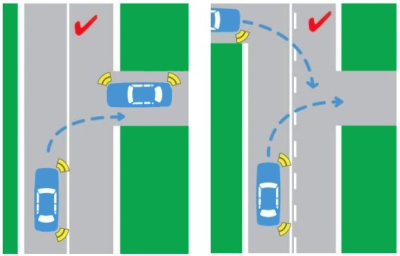
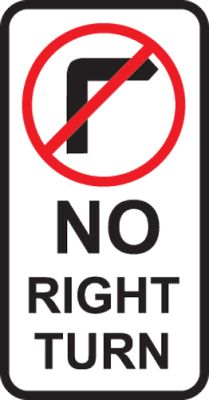

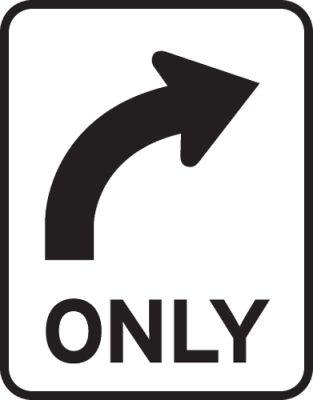
Choosing lanes when turning
Signs showing where you must or must not turn or enter are regulatory signs and must be obeyed by law.
Plan your turns early so you’re in the correct lane or part of the road and have enough time to indicate.
If necessary, you can drive on, across, or outside edge lines for up to 100m when turning left or right.
You must follow the lane lines when turning. If there are no lines, you should stay in the same lane while you turn.

No entry
When you see the ‘No entry’ sign, you must not turn into or enter the road.

Bicycle lanes
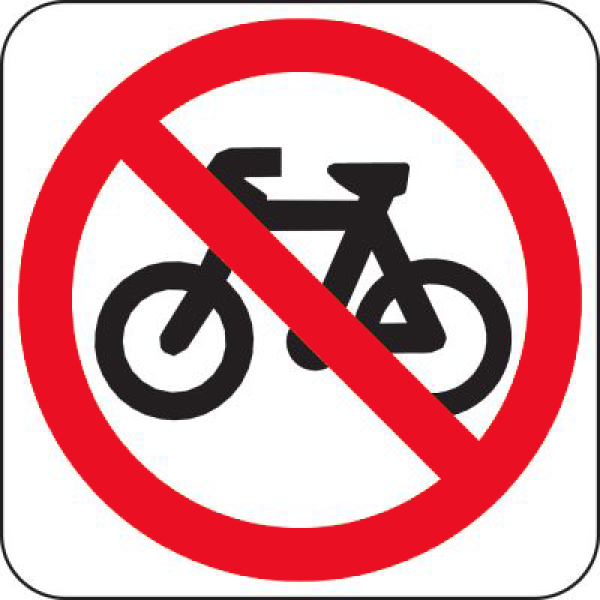
Bicycles and hook turns
Bicycles can use a hook turn to turn right. This means they use the left lane to turn right.
When doing a hook turn, a bicycle rider must:
- approach the intersection from the far left side
- keep to the far left side while entering the intersection
- keep clear of any marked pedestrian crossing
- give way to vehicles approaching from their right
- if there are traffic lights, stay to the left side and wait until the light changes to green.

As a driver, you must take care to avoid colliding with bicycles turning at intersections.
Bicycle riders must give a hand signal when turning right. However, they do not have to give a hand signal when making a hook turn to turn right.

Long and oversize vehicles
Some oversize or long vehicles have a ‘Do not overtake turning vehicle’ sign. These vehicles may use more than one lane when turning right or left.
Do not put your vehicle in the path of a large, heavy vehicle when it’s turning – you may be crushed. It’s safest to stay behind and wait until the vehicle has completed the turn.
For rules about overtaking long vehicles with a ‘Do not overtake turning vehicle’ sign, see Overtaking.
